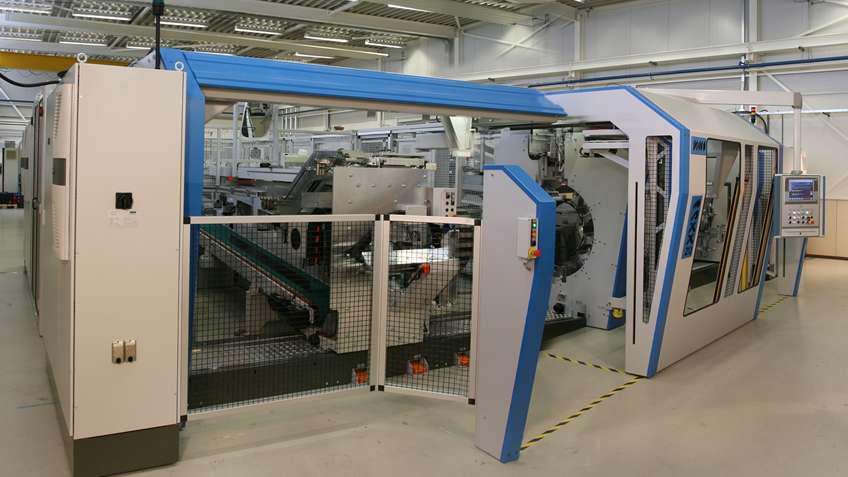Challenge
One of the most important elements in the production process of an automotive tyre is the Tire Building Machine (TBM). The TBM constructs the tyre as a series of reinforced layers to form the sidewalls and tread.
Fed from spools, the components of the tyre are built up in various layers on the drums. In this phase the precision with which the material is fed, its length and the positioning are very important. These variables are monitored by cameras in the TBM. Grashuis explains: "An important aspect in the production of car tyres is the time it takes to construct each tyre. This has to be as short as possible. Not so long ago, a TBM required 50 to 60 seconds per tyre. The new MAXX TBM does it in just 38 seconds.
Depending in part on variables such as the customer’s spool sizes and the number of size changes, the customer can achieve an OEE (Overall Equipment Effectiveness) as high as 80%. The combination of a short cycle time and the increase in OEE leads to a high output. The MAXX is a completely hands-off machine, the operator's main task is to load the spools of material. Many important parameters are recipe controlled, so the accuracy and repeatability is very good.
Solution
The use of servo drives has played a big role in speeding up the cycle time by controlling linear movement of the drums over the track. Thanks to the linear servo technology, this occurs more quickly and more precisely.
VMI uses 22 servo shafts for all the different movements in the MAXX TBM. The synchronisation of all the various elements is handled by the Allen-Bradley ControlLogix controller with integrated motion modules and Allen-Bradley Kinetix servo drives. Increasing the speed of the process is also important when it comes to fitting the cap strip. Tyre manufacturers want this strip to be affixed with a controlled amount of tension.
Results
As a result of the ever higher speed, increasingly stringent demands are placed on the controller. For the Capstrip Tension Controller, the use of Rockwell Automation's technology has proven to be an excellent solution. Ultimately, this has led to a doubling of the speed. While this was originally 4m/s, it was first increased to 6m/s, and in the new machine a speed of 8m/s has been achieved.
The weld or splice is also made quickly and precisely through the use of servo technology. In the past this step was done manually for some of the components.
The increase in speed also applies to the application of the pre-assembly and the body plies. In the MAXX these actions are performed in a single movement and the components are applied in rapid succession, one after another. Another procedure that was previously done manually but which is now done by robots is the loading of bead apexes into the machine and the removal of finished tyres. These changes have also had a time-saving benefit and helped improve working conditions for personnel.

